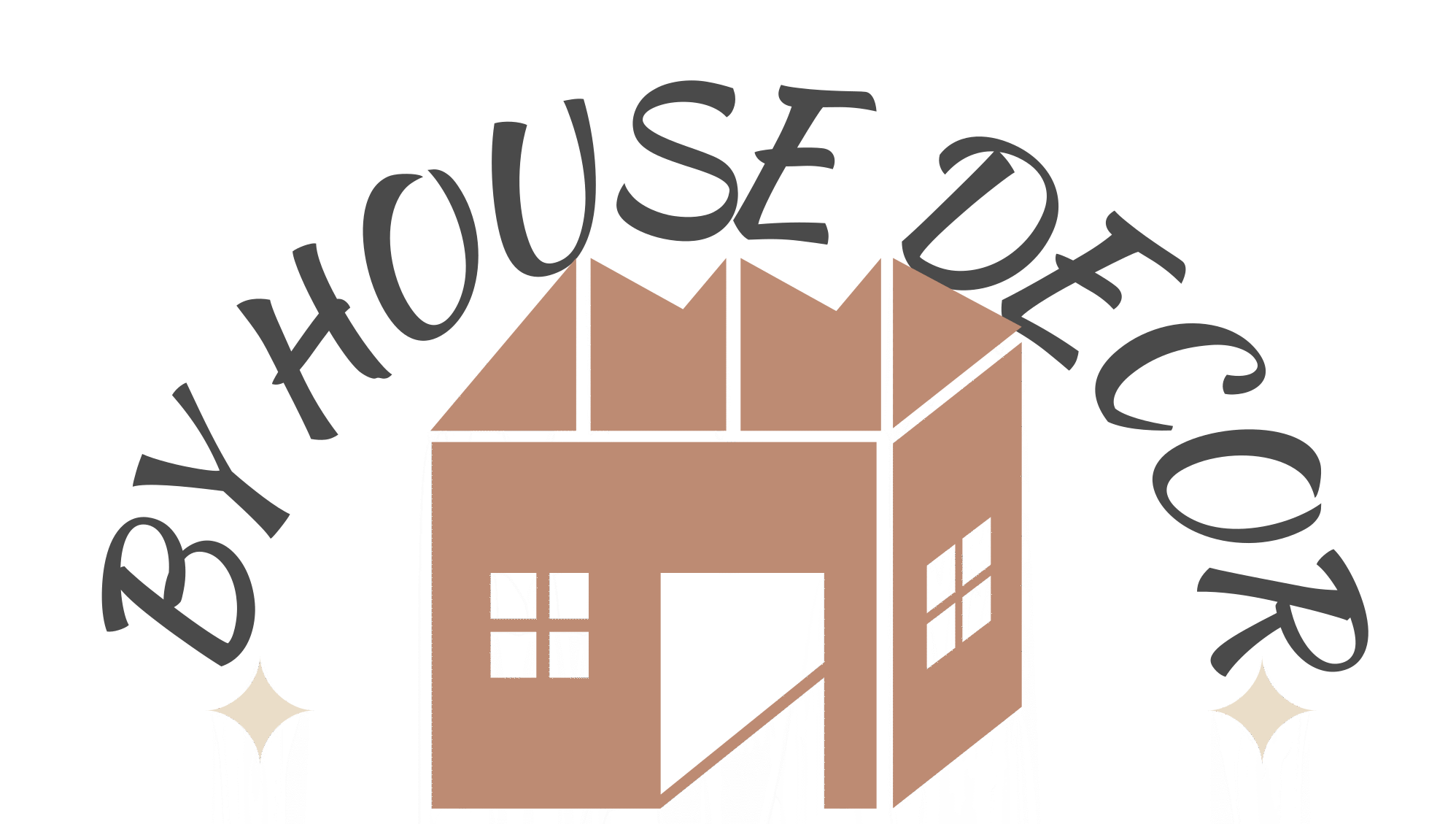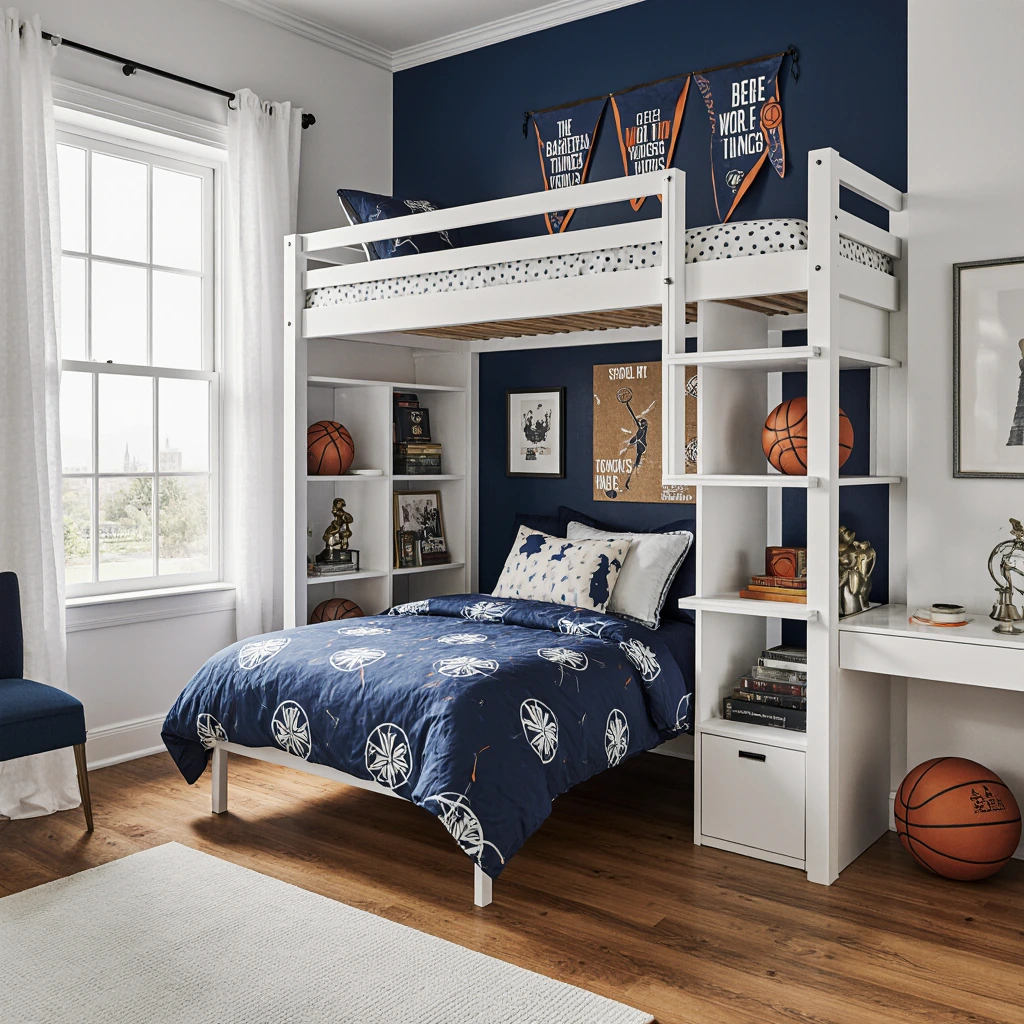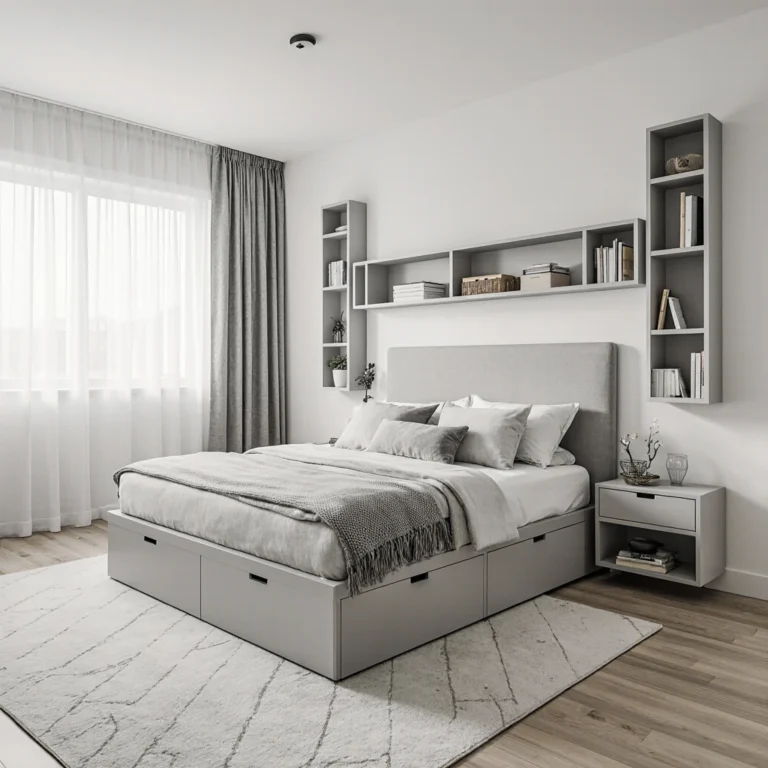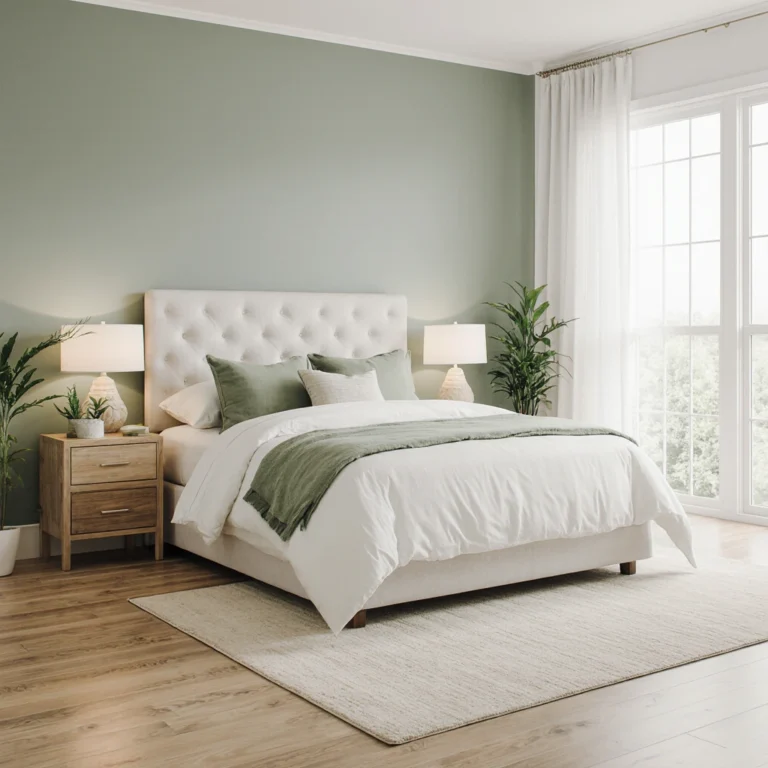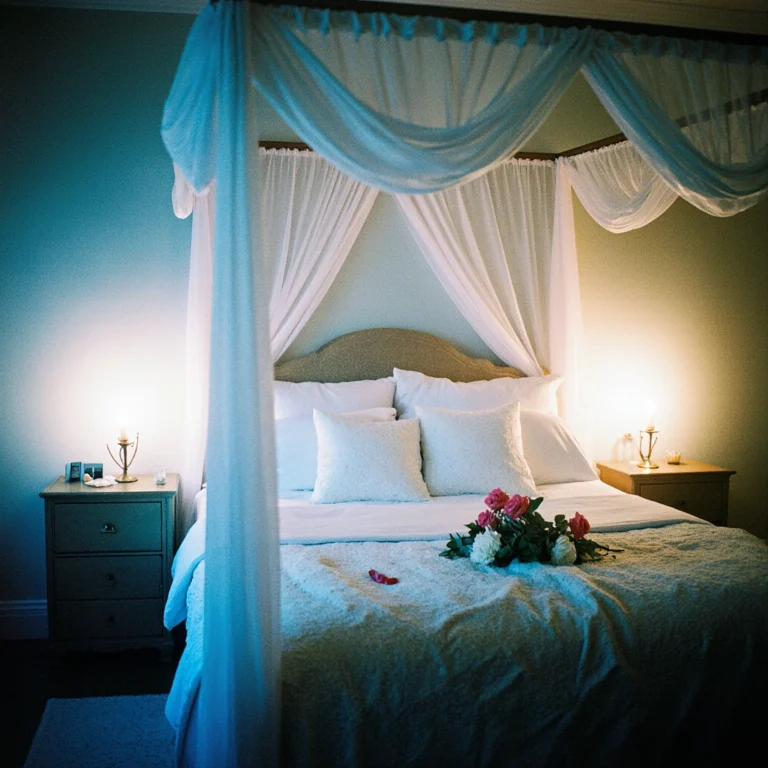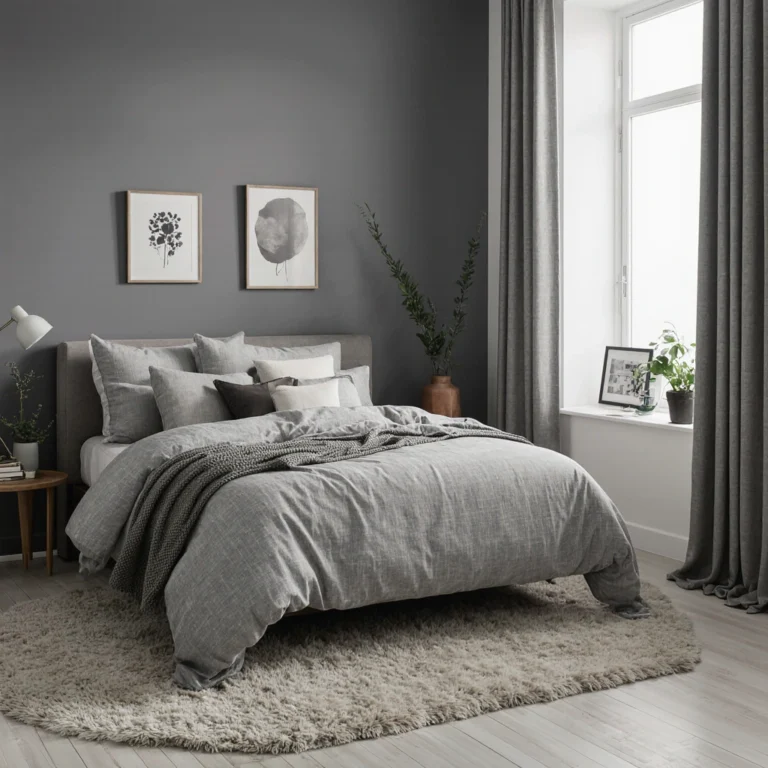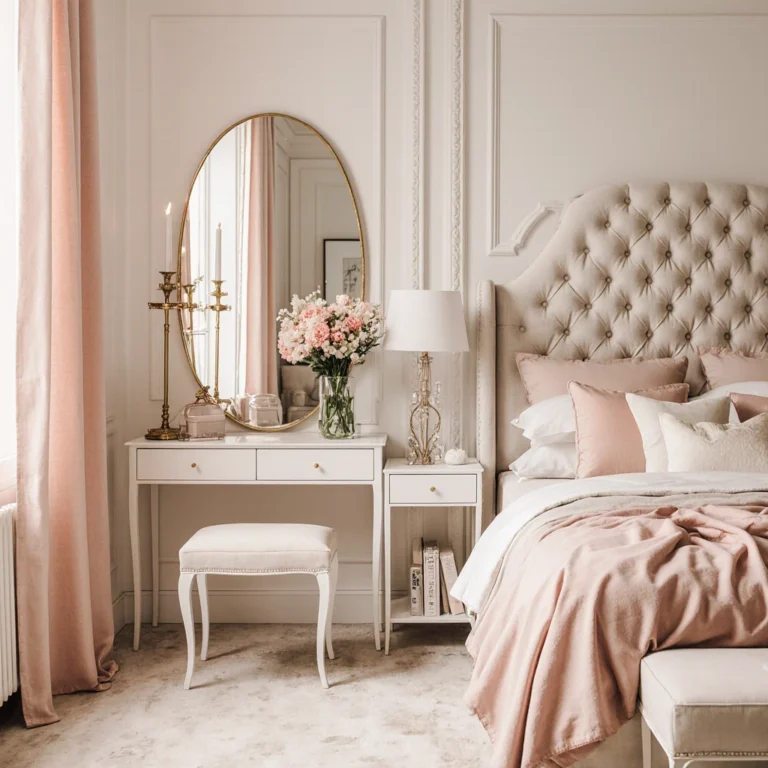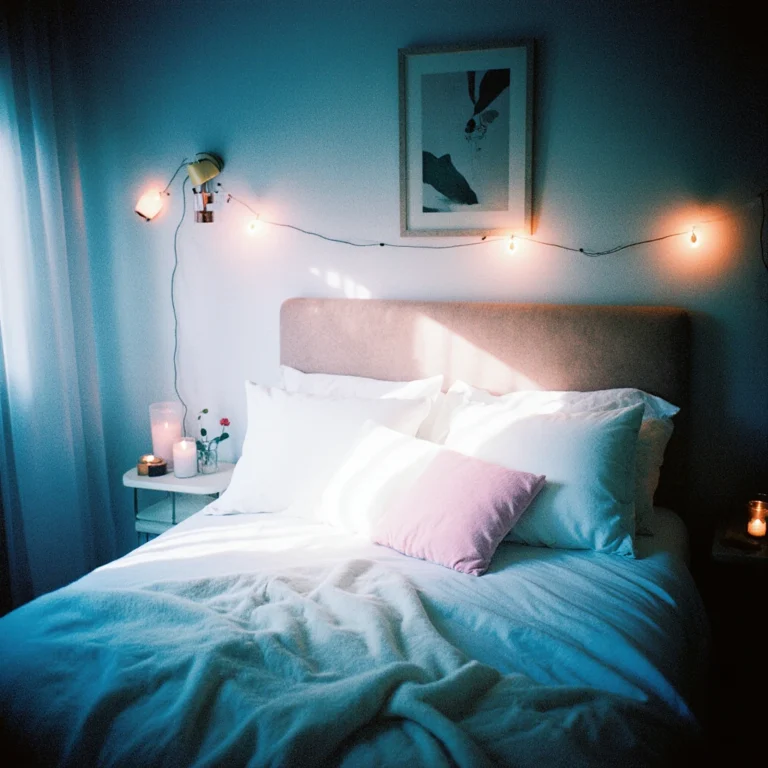25 Cool Bedroom Design Ideas for Teenage Guys
Table of Contents
Finding the perfect bedroom design ideas for Teenage Guys can feel like navigating a maze of competing priorities. You want a design that reflects their personality, fits their lifestyle, and creates a space they’ll enjoy. Whether your teen is into sports, gaming, music, or even industrial aesthetics, the right bedroom design can transform their space into a personal sanctuary that grows with them.
The teenage years are a crucial stage in developing independence and self-expression, making their bedroom more than just a place to sleep; it’s their sanctuary, their study space, and their social hub, all rolled into one. A well-designed teen bedroom balances practicality with style, creating an environment that promotes comfort and productivity while also accommodating their unique interests and personalities.
Popular Teen Bedroom Design Styles
Modern Minimalist Style
Modern minimalist style has gained significant popularity among teens who value clean lines and uncluttered spaces. This design philosophy focuses on the principle of “minimalism equals abundance,” creating spacious and organized rooms without compromising individuality.
Key elements of minimalist teen bedrooms include neutral color palettes dominated by shades of white, gray, and black, with pops of color through artwork or accessories. Furniture should be stylish and functional, often serving multiple purposes to maximize space.
The beauty of minimalist design lies in its flexibility; teens can easily update their spaces by replacing a few key accessories rather than renovating the entire room. This approach particularly appeals to budget-conscious parents and teens who prefer a more mature and sophisticated aesthetic.
Industrial and Urban Vibes
Industrial-inspired bedroom designs appeal to teens who love the raw, authentic feel of exposed materials and urban aesthetics. This style incorporates elements such as exposed brick walls, metal fixtures, and reclaimed wood furniture to create a space that is both modern and comfortable.
Color schemes typically revolve around dark tones—charcoal gray, deep blue, and warm brown—with metallic accents of brass, iron, or brushed steel. Lighting plays a crucial role, with Edison bulbs, track lighting, or vintage-inspired lamps creating an industrial feel.
The industrial style is particularly suitable for teens interested in music, providing an excellent backdrop for displaying musical instruments, vinyl records, or band posters. It’s also highly adaptable, allowing for easy integration of technology and gaming equipment without disrupting the overall aesthetic.
Sports and Hobby-Inspired Designs
For teens who are passionate about specific sports or hobbies, sports-themed bedrooms offer an opportunity to showcase their interests while maintaining a cohesive design. The key is to balance sports-themed elements with more mature design choices to create a space that doesn’t feel childish as they grow older.
Sports-themed bedrooms can incorporate team colors into bedding, wall art, or accent furniture, while using neutral tones for larger pieces. Display cabinets for trophies, jerseys, or equipment can become major points of interest when carefully integrated into the room’s design.
Gaming spaces benefit from comfortable furniture, carefully designed lighting to reduce eye strain, and cable management systems to keep electronics organized. The design should support gaming activities and other daily functions such as studying and relaxing.
Maximize Space and Comfort in Teen Bedrooms
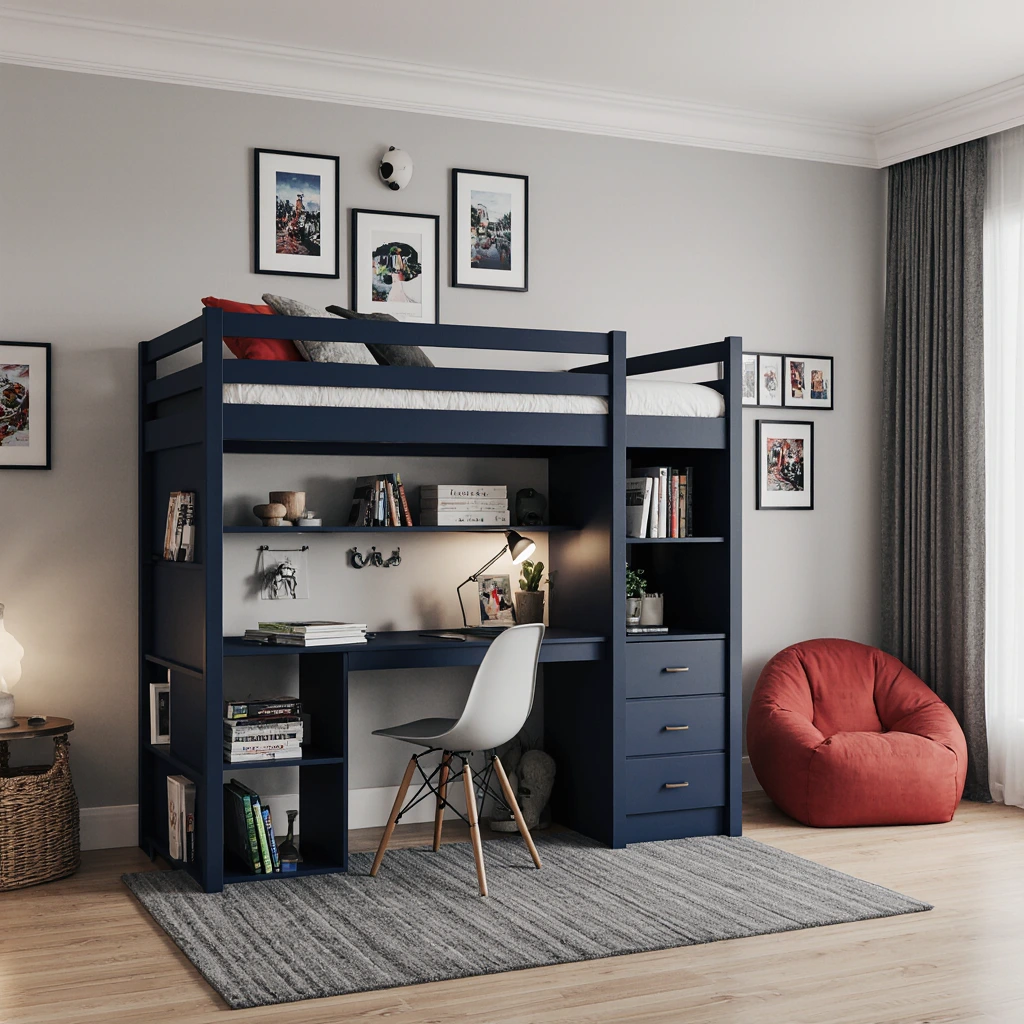
Smart Storage Solutions
Efficient storage is crucial in teen bedrooms, where space is often limited and items accumulate quickly. Built-in storage solutions, such as window seats with hidden compartments or beds with built-in drawers, make the most of every square inch while maintaining a clean look.
Vertical storage options, including tall bookshelves, wall-mounted organizers, and over-the-door storage systems, draw the eye upward and create the illusion of higher ceilings. These solutions are particularly effective in small rooms where floor space is limited.
Multifunctional furniture pieces serve a dual purpose in space-conscious designs. Ottoman storage cubes provide seating and hidden storage, while desk organizers with charging stations keep electronics organized and accessible. These pieces adapt to the changing needs of teens as they transition from high school to college.
Furniture Design and Arrangement
Furniture arrangement greatly impacts the spaciousness and function of a bedroom. In most teen bedrooms, the bed is the primary focal point, while the rest of the furniture is arranged to create a natural flow of movement and designated areas for different activities.
Creating separate spaces for sleeping, studying, and relaxing helps teens separate aspects of their daily routine. A study nook near a window allows for natural light, while a comfortable reading chair in the corner provides a quiet retreat.
Floating furniture, such as wall-mounted desks or bedside tables, creates a sense of space while providing necessary functionality. This approach works well in small rooms where every square foot counts.
Technology Integration
Modern teen bedrooms must accommodate a variety of technology needs, from charging stations to gaming devices. Integrated cable management systems keep cords organized and out of sight, while strategically placed outlets ensure easy charging.
Gaming devices require special attention to ergonomics and organization. Adjustable office chairs, monitor stands, and cable management systems provide a professional work environment suitable for both gaming and academic work. Acoustic panels improve sound quality and add aesthetic appeal to walls.
Smart home technologies, including voice assistants, smart lighting, and programmable thermostats, appeal to tech-savvy teens while offering practical benefits. These systems can be programmed to support healthy sleep schedules and study routines.
Color Palettes That Promote Relaxation and Sleep
Calming Neutrals
Neutral color palettes are the foundation for calming bedroom environments, providing a sophisticated backdrop that won’t look outdated as teens mature. Warm grays, soft blues, and earthy tones create a sense of calm, while offering flexibility in choosing accent colors and personal touches.
Color psychology plays an important role in bedroom design, as cool tones promote relaxation and better sleep quality. Blues and greens have been shown to lower heart rate and blood pressure, making them ideal choices for bedroom walls or key furniture pieces.
Layering different shades from the same color family adds depth and visual interest without overwhelming the space. This monochromatic approach creates a cohesive, mature look that can be easily updated with new accessories or artwork as tastes change.
Bold Accent Colors
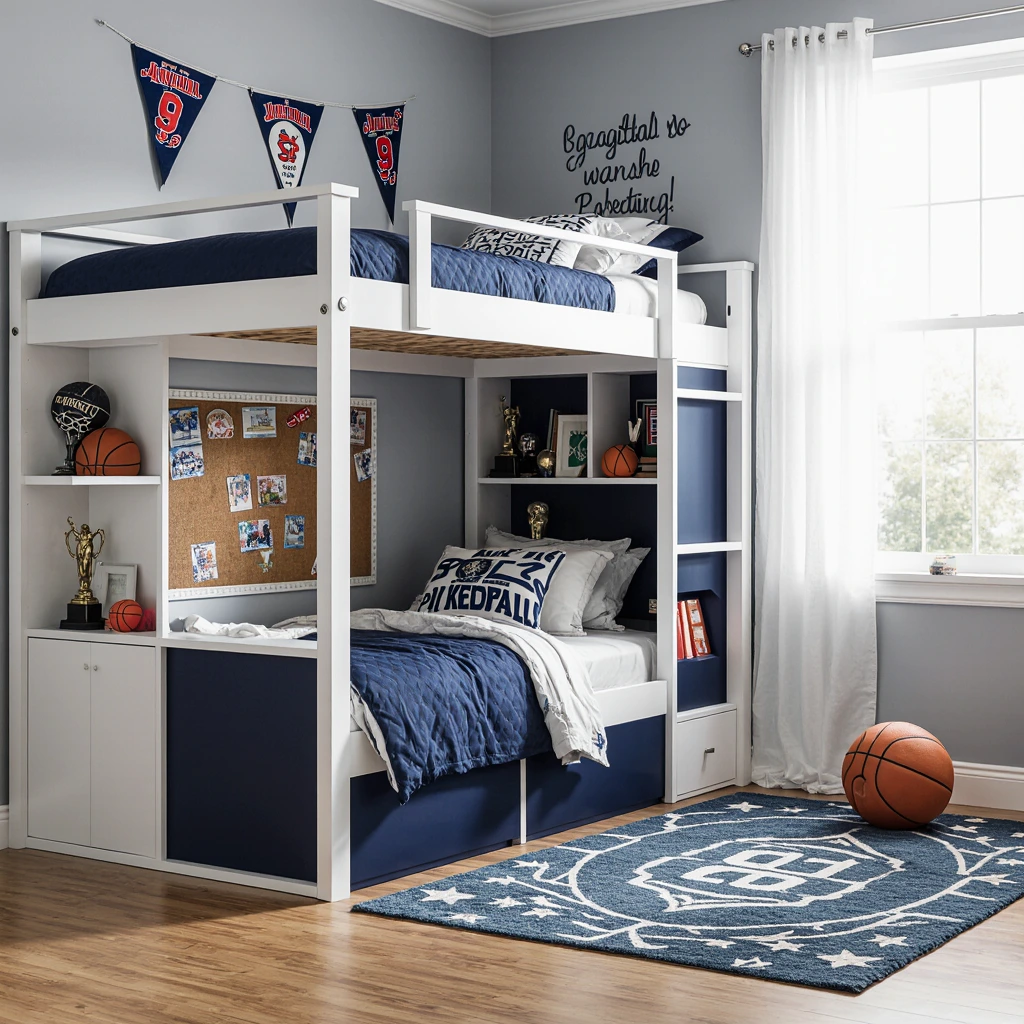
While neutral bases provide stability, the judicious use of bold accent colors allows teens to express their personalities and interests. Dark forest green, deep burgundy, or navy can be used as accent walls or featured in bedding, artwork, and accessories.
The 60-30-10 rule provides a reliable framework for incorporating bold colors: 60% neutral base, 30% accent color, and 10% accent color. This balance ensures a room feels harmonious rather than chaotic, while allowing for personal expression.
Accent colors can be easily changed as interests change, making them ideal for teens who may want to update their spaces regularly. Removable wallpaper, artwork, and textiles offer cost-effective ways to refresh a room’s look without the need for a major renovation.
Natural and Earthy Colors
Earth-inspired color palettes bring a touch of harmony to teen bedrooms, creating calm and serene environments. Warm browns, grayish greens, and terracotta reds combine to create modern and timeless spaces.
These natural colors pair beautifully with wooden furniture and natural fabrics, creating cohesive designs that exude authenticity and sophistication. The organic quality of these colors promotes relaxation and stress relief, both important factors for teen mental health.
Natural color palettes produce beautiful photos, which is important for teens who may want to share their space on social media. The timeless quality of these colors means the room will look fresh in photos for years to come.
Lighting Ideas for the Perfect Mood

Enhancing Natural Lighting
Enhancing natural lighting should be a top priority in any bedroom design, as it supports healthy circadian rhythms and creates a cheerful atmosphere. Sheer curtains or adjustable blinds allow for light control while maintaining privacy and style.
Window shades should complement the overall design of the room while serving practical functions. Blackout curtains installed behind decorative panels provide complete darkness for sleeping while allowing natural light to enter during the day.
Mirrors strategically placed opposite or next to windows enhance natural light, making rooms appear larger and brighter. This technique is particularly effective in small bedrooms where natural light may be limited.
Task and Ambient Lighting
Proper task lighting is essential for study areas, reading nooks, and hobby spaces. Adjustable desk lamps provide focused illumination for homework and projects, while bedside reading lamps should be bright enough for books, but not so bright that they interfere with getting ready for bed.
Ambient lighting provides overall illumination and sets the mood for various activities. Ceiling fixtures, whether recessed lights, pendant lights, or built-in ceiling fans, should provide even illumination without creating harsh shadows.
Dimmer switches allow for customizable lighting throughout the day, accommodating both active and restful periods. This flexibility is especially important for teens, whose schedules often alternate between school days and weekends.
Decorative and Mood Lighting
String lights, LED strips, and decorative lamps add personality and warmth to teen bedrooms while serving a practical purpose. These lighting options can highlight architectural features, artwork, or art collections, while creating a relaxing atmosphere.
Color-changing LED systems appeal to tech-savvy teens while also offering practical benefits. These systems can be programmed to support healthy sleep cycles by gradually transitioning from cool to warm hues as bedtime approaches.
Neon signs, vintage-inspired fixtures, or unique lamp designs can serve as both lighting and art, adding a personal touch without cluttering surfaces. These distinctive pieces are especially suited to minimalist designs, where they become key points of interest.
Common Bedroom Design Mistakes to Avoid
Clutter and Clutter
One of the most common mistakes in teen bedroom design is trying to fit too much stuff into a limited space. Clutter creates visual clutter and makes rooms appear smaller and less comfortable than they actually are.
The solution is to prioritize essential items and find creative storage solutions for everything else. Regular decluttering sessions help maintain organization and prevent unnecessary clutter.
Choosing multipurpose furniture helps maximize its functionality without overwhelming the space. An under-bed storage bench provides seating and hidden storage, while a desk with built-in shelving eliminates the need for separate bookcases.
Poor Lighting Options
Relying solely on overhead lighting creates harsh shadows and doesn’t provide enough illumination for various activities. Teen bedrooms need multi-layered lighting, including ambient, task, and decorative elements.
Placing lighting at just one level creates an unbalanced lighting scheme that can appear traditional rather than welcoming. Incorporating lighting at different heights—floor lamps, table lamps, wall sconces—creates a more dynamic and relaxing lighting effect.
Ignoring natural light patterns when arranging furniture can lead to dark, unwelcoming spaces. Desks and reading areas should benefit from natural light whenever possible, while sleeping areas may be better off away from direct sunlight.
Ignoring Personal Style
The biggest mistake in teen bedroom design is imposing adult preferences rather than taking into account their personal style and interests. While parents may prefer neutral, mature designs, teens need spaces that reflect their personalities and provide psychological comfort.
The key is finding a balance between mature design principles and personal expression. This might mean incorporating band posters into a stylish gallery wall or displaying art collections in a thoughtful, organized way.
Involving teens in the design process ensures they’re satisfied with the final result and increases the likelihood of maintaining the space. Their opinions on colors, themes, and design preferences instill a sense of ownership and pride in their environment.
Conclusion
Designing the perfect teen bedroom requires balancing function, style, and personal expression. The most successful designs include smart storage solutions, thoughtful lighting, and color schemes that promote comfort and productivity. By avoiding common pitfalls like clutter and poor lighting choices, while also considering personal style and interests, you can create a space that truly meets their needs.
Remember, teen bedrooms should evolve with their residents, so choose key elements that adapt to changing interests and needs. Investing in thoughtful design results in improved sleep quality, study habits, and increased personal satisfaction with their living space.
Ready to give your teen a makeover? Start with one space—perhaps by updating the lighting or reorganizing the storage—and go from there. Share your bedroom renovation experience with us in the comments below, and don’t forget to subscribe for more design inspiration and practical tips!
Best Amazon Picks :
FAQs
Q: What’s the ideal color scheme for a teen’s bedroom?
A: Neutral colors like gray, navy, or charcoal work well with bold colors. This approach adds a touch of sophistication while allowing for self-expression through accessories and artwork.
Q: How can I maximize space in a small teen bedroom?
A: Use vertical storage units, multi-purpose furniture, and built-in solutions. Platform beds with storage, wall-mounted desks, and over-the-door organizers can significantly increase usable space.
Q: What lighting is best for studying and homework?
A: Adjustable desk lamps with bright, soft LED bulbs provide focused task lighting. Complement this with ambient room lighting to reduce eye strain and create a comfortable work environment.
Q: How often should a teen’s bedroom be updated?
A: Large updates every 3-5 years work well, with smaller updates through accessories, artwork, and textiles more frequently as interests change.
Q: What’s the best way to incorporate technology into a bedroom design?
A: Plan for charging stations, cable management, and comfortable furniture for gaming or computer use. Built-in solutions look more stylish and professional than additional organizers.
Q: How do I balance my teen’s style preferences with their practical needs?
A: Start with practical, neutral staples, then add a personal touch with removable items like posters, bedding, and accessories. This approach satisfies both parties while maintaining design consistency.
